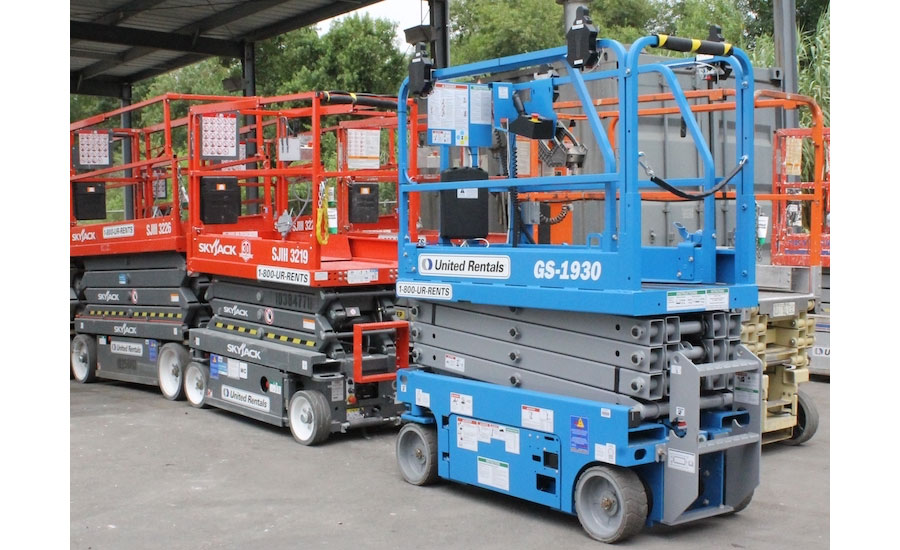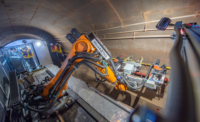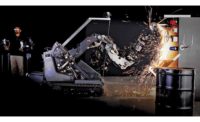In one of the biggest investments in automation technology by the rental industry, United Rentals on Dec. 17 announced that it has entered into a partnership with 5D Robotics to install driverless control systems on equipment in its rental yards.
“We’re very excited to be moving forward with 5D Robotics,” said Helge Jacobsen, United Rentals vice president, in a statement. “Seeing this reliable, safe, autonomous vehicle technology function in our rental yards has been an eye-opener.”
[Watch a video of the autonomous vehicles in action at a United Rentals yard.]
The autonomous-control units will be installed on multiple kinds of machines in United Rental’s fleet, including scissor lifts, aerial work platforms, and, eventually, forklifts. Once activated, the machines will be able to navigate through United Rental’s yard and automatically avoid obstacles along the way.
Many autonomous driving systems used in factories and other controlled environments rely on GPS and laser-based solutions by checking their locations against a predefined map or reading numerous location tags in the environment. These solutions can be less reliable in busy outdoor environments, where inclement weather and shifting layouts can confuse the system.
5D Robotics’ autonomous system uses ultra-wide-band radio to orient the self-driving vehicles within their environments, avoiding some of the limitations of GPS and laser-based navigation systems. “It’s the same technology used in land-mine detection,” says David Bruemmer, CEO of 5D Robotics. “It works really well in crowded areas and can handle blind corners, as well as dust, fog or snow.”
5D Robotics' driverless technology requires only a control module on each piece of equipment and a minimum of three wireless base-station modules scattered around the work area. “In the United Rentals yard where we were testing this, we had four of these little modules up on light posts, but you can really put them anywhere,” says Bruemmer. “They don’t need to be precisely placed in a specially surveyed area. And once they were up, we were able to guarantee 2-centimeter-accurate positioning throughout the entire area—in this case, two to three acres.”
In addition to navigating crowded areas to reach preset destinations, the self-driving equipment also can follow a human guide, and multiple machines can operate together in a “wagon train” mode. Obstacle-avoidance, including avoiding moving objects such as humans or other vehicles, is a function of the onboard control module; therefore, the vehicle can operate safely even if the wireless signal is lost. Installation of an onboard control module takes approximately five to 10 minutes, says Bruemmer.
“Imagine your driver shows up with a flatbed—the forklifts can drive themselves right up onto it,” says Bruemmer. “The goal isn’t to replace the human operator but to increase safety and increase awareness of what’s going on.”
According to Bruemmer, rental yards are only the first step in bringing his firm’s autonomous technology into the construction sector. “We have a new robot we’ve been working on called the Yard Bot, which is essentially a smart wheelbarrow. It’s constantly 3D-mapping the environment and can transport materials and packages wherever you want through a busy site.”
The technology behind 5D Robotics' system already is used by the military for transporting larger vehicles, so adapting it for construction's heavy iron is feasible, says Bruemmer, noting, “This technology can scale. The initial technology with United Rentals can prove out the concept and identify ways to reduce cost."
United Rentals also sees potential for autonomous machines beyond the equipment yard, says Jacobsen. "The integration with 5D offers substantial opportunities to improve our efficiency and safety, as well as provide new analytical and mapping tools to our own branches and, eventually, to our customers," he says.






Post a comment to this article
Report Abusive Comment